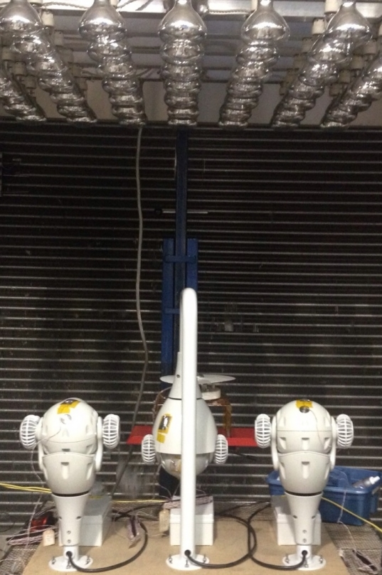
Don’t feel the heat, use Redvision X-SERIES™ cameras
Before entering the African, Middle Eastern and Southern European markets, Redvision has established its X-SERIES™ camera’s performance in hotter climate conditions.
Exceeding the operating temperature of an electrical and electronic product, or the temperature tolerance of the components within it, dramatically shortens its life and jeopardizes warranties. The product operating temperature will be above the ambient climatic temperature, due to the heat generated by components. In the X-SERIES™, the prime contributors are the PTZ motor, LED illuminators and power supply. Exposure to direct sunlight also has a significant effect.
Redvision approached TÜV SÜD, a world-leading provider of testing and product certification to carry out a series of independent tests on the X-SERIES™, simulating operation in hotter climates. The test ran for 24 hours, with ambient temperature rising to 44°C and solar radiation peaking at 1120 W/m². Temperature probes were used to record the internal temperature of the camera. Three cameras in three different configurations were tested - with sunshield and with IR LEDs on; without sunshield and with IRs on, the worst case scenario; and without sunshield and with IR’s off. Testing was carried out with power, LEDs and drives running simultaneously and at maximum.
The results were unprecedented and showed that the X-SERIES™ internal camera temperature only rose slightly above ambient temperature, in all three scenarios. The contributing factors for success were; reducing stationary torque by 50% so using less power; efficient LED’s with minimal heat generation; the heat-sink, cooling benefit of the X-SERIES™ cast aluminum construction; energy saving power management; using 24V dc supply to avoid the heat from AC conversion; a sunshield for shade from direct sunlight; and using high quality components with a wide temperature range tolerance.
The X-SERIES™ cameras are fit for purpose in hot climates. Redvision is very pleased that its green, eco-design approach not only keeps energy costs very low, but can also prevent adverse heat generation.